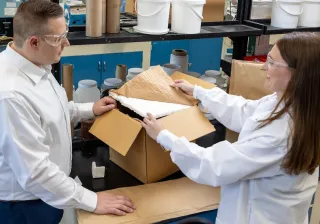The challenge is immense: Estimates forecast that 60% more food will be globally needed by 2050 while only 2% more agricultural land will be available. Due to mounting environmental issues, it seems unlikely that conventional agriculture can solve this problem by increasing efficiency alone. The requirement that not only calories must be generated but also nutrients supporting a healthy diet to fight under- and malnutrition further complicates the situation.
Cellular agriculture provides alternatives
Industrial biotechnology supplies nowadays many crucial medicines and chemicals on a routine basis. Cellular agriculture aims to expand the range of biotechnological products significantly towards commodities that are conventionally produced by agriculture such as milk and leather. Besides microbes, plant and even animal cells are being developed for the production of food, cosmetics and materials. These processes bear potential to disrupt current value chains and substitute unsustainable or unethical production methods.
VTT spearheading several developments
Academic and commercial interest on cellular products such as plant cells for food and cosmetics as well as microbes for leather and other materials is constantly rising.
In the field of cellular agriculture at VTT, we focus our research mainly on plant and microbial platform development. Furthermore, systems for acellular products such as proteins for food and material applications are already very advanced.
Have a look at our review Cellular agriculture – industrial biotechnology for food and materials at the scientific journal Current Opinion in Biotechnology's February 2020 issue. It offers you a complete summary detailing the status and prospect of cellular agriculture: https://www.sciencedirect.com/science/article/pii/S0958166919301417




